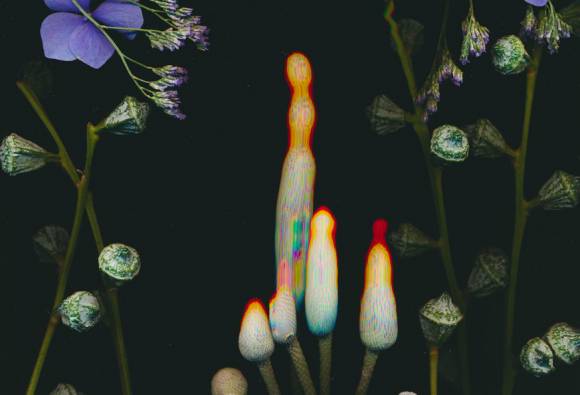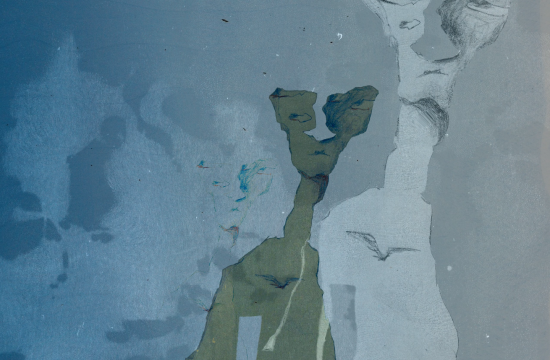
Tilyen Mucik: Floriography
Photography exhibition
Curator: Hana Čeferin
In June, you are cordially invited to attend a public guided tour of the exhibition “Tilyen Mucik: Floriography”, on view at Cankarjev dom’s Small Gallery:
13 June 2023, at 18.00
The tour is conducted by the exhibition's author, Tilyen Mucik, and curator, Hana Čeferin.
Tilyen Mucik’s Floriography exhibition addresses the issue whether flowers are capable of saying more than words, while exploring the ways in which various floral combinations communicate with the viewers. Floriography is the name for the language of flowers, i.e., the use of specific flowers and their combinations for expressing hidden meanings and one’s sentiments for others. The popularisation of floriography dates back to the Victorian era, when plant collecting and creating herbaria were a popular pastime, and expressing one’s feelings openly was regarded as undesirable in the fairly conservative society. The first dictionary of floriography, published in France in 1819 under the title Le langage des fleurs, quickly became popular in Victorian upper classes. Honeysuckle is supposed to evoke sweet dreams of love, basil symbolises open hatred, rose is a token of passionate love and belladonna implies death. Some of these meanings have been preserved to this day, and Mucik’s photography focuses on their contemporary contexts and possible interpretations.
Nature and botany have been of enduring interest to the artist. As a child, she would carefully collect flowers in herbaria, a habit she has never discontinued. In time, a photographic herbarium replaced the one compiled in childhood, and the artist has been documenting various plants with undiminished sense of wonder and interest. If her work primarily involves examining and observing nature, the natural world is often present quite literally. In her early works, the artist experimented with the techniques of anthotype, an analogue photographic technique where flower-, fruit- and vegetable-based natural pigments are added to the emulsion, and the chlorophyll process where photographic images are imprinted onto the surface of plant leaves through exposure to sunlight. She continued her commitment to experimentation in subsequent photographic series, focusing on botany through a blend of analogue and digital processes, different printing techniques and layouts of photo and plant combinations.
While first mainly directing her artistic focus on flowers and blossoms, Mucik gradually began to incorporate less conventional plants into her compositions. Spanning several art series created since 2018, the current exhibition integrates different artwork shapes, sizes and techniques with a view to summarizing the artist’s love of flora and diverse manifestations of plant life. From the magnifications of seemingly unremarkable seeds, which in large formats come across as some kind of extra-terrestrial organisms; and photographs of halophytes, plant species adapted to living solely in a saline environment; symbiotic combinations of artificial materials and plants in the Forced Symbiosis series; to scanography of different combinations of flowers and green plants. Botany most directly features in the Shrubs series, where natural “plantness” is returned to plant photographs by colorizing them with plant-based natural pigments, stitching them with yucca-harvested thread, burying analogue films in soil and observing the process of their disintegration.
While floriography may no longer be as popular a practice as it was in Victorian times, flowers, with their aesthetic appeal and ever strong symbolic connotations, remain of continuing relevance, both in everyday rituals and as contemporary art motifs. An incredibly wide array of artists seems to have taken an interest in flowers at some point in their creative careers, being intrigued by their elusive meaning and appearance, their aesthetic value, as well as their life cycle that has symbolised the transience of human life for centuries. For Tilyen Mucik, the key to observing this botanical diversity is as much the wide range of plant species (from meadow flowers to green plants, halophytes and tropical vegetation) as constant technical experimentation. After all, the artist also associates her communication with and reflection on the world with the concept of floriography, often using flowers to express her emotions and thoughts. The language of flowers has become the language of the artist who has conveyed her love of botany time and time again.
Hana Čeferin
In my work, I invariably return to nature – creating photographic herbaria, collecting plants, making natural pigments and employing alternative techniques. I have a real mania for the complexity, randomness, chaos and beauty of nature. Nature’s independence and balance never fail to amaze me – everything is always as it should be.
Tilyen Mucik
Tilyen Mucik (1995) is a visual artist who lives and works in Ljubljana. After graduating from The Faculty of Applied Sciences (VIST) in 2018, she finished her master studies in Photography at the Academy of Visual art and Design in Ljubljana in 2022. Since 2011, she has exhibited her works in Slovenia and internationally (among others at the Božidar Jakac gallery, Galerija Fotografija gallery, P74 gallery, Ljubljana City Hall, Museum of Contemporary Art MSUM+, Museum of Arts and Crafts Zagreb and Galerie Albrecht in Berlin). Her works were published in different online and printed magazines, such as Wotisart?, SemiMagazine, Float magazine and F-stop magazine. She is the recipient of the ALUO Float Photo Magazine curator's award (2022), received a Special Mention by Envision Arts (2020) and won second place in the category “Artistic concept” at the Rovinj PhotoDays festival (2018). Her works were presented at several international art fairs: Vienna Contemporary, Photo Basel, Paris Photo, Unseen, Zero Pixel, YIA Paris. Among her most recognizable series are Flora Femina (2018) and Shrubs (2020), which both explore the artist's love of botanical photography, alternative photographic processes, and plant-based pigments.
Hana Čeferin (1995) holds a Master's degree in Art History. Since 2015, she has been a collaborator of Galerija Fotografija in Ljubljana, where she has worked with Slovenian and international artists. Between 2022 – 2023, she worked in the curatorial department of Kunsthalle Wien. Since 2023, she is head of the Design Biennial BIO28. Since 2021 she has been the editor of the contemporary art magazine ETC., and the director of the eponymous institution. As an independent curator, she has collaborated with Cankarjev dom, Škuc Gallery and the National Gallery, among others. She regularly publishes critical and art historical articles in journals and magazines. Between 2020 and 2022, she participated in the School for Curatorial Practice and Critical Writing – World of Art, which is part of SCCA Ljubljana.
Co-production of Cankarjev dom and Galerija Fotografija gallery.





